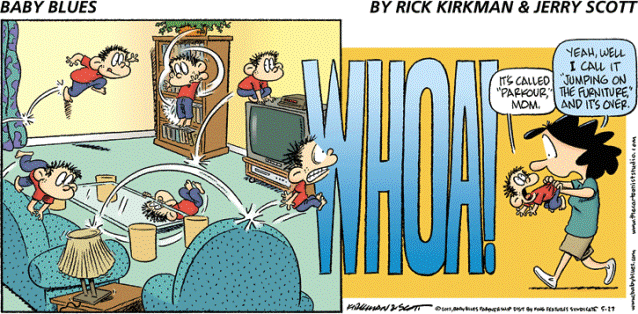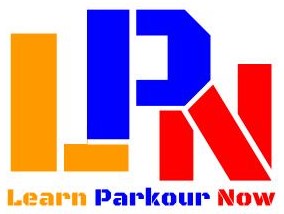
When I first started parkour and my family would see me randomly jumping out the second floor windows, my mom’s reaction was not much different from the above cartoon. It wasn’t until she saw an article about parkour in the New York Times that she started to believe I was not just acting crazy! You can read that article here. Parkour is not recklessness. It is not without form or technique. It is not…anything that Michael Scott and other characters from “The Office” do in this clip:
Although, admittedly a hilarious portrayal, this certainly is NOT parkour.
Parkour is efficient use of one’s body. It is quickly and safely overcoming obstacles. It is a way of moving, a way of thinking, a way of being. It is the evolutionary outcome of what was used in French military training around the turn of the 20th century, and before that, a common way of moving for indigenous tribes of Africa. When practicing parkour, one executes a wide variety of skills and movements–many of which are influenced by the animal kingdom–such as running, jumping, landing, rolling, vaulting, climbing, swinging, etc..
Freerunning has the same origins but differs in its philosophy. While parkour is concerned with efficient movement, freerunning–although still using the same efficient movements–focuses more on creativity, self expression, and style. This is when the athlete incorporates more flips, spins, and other acrobatics to enhance aesthetic appeal but not necessarily to increase speed and efficiency. Today the two terms are often used interchangeably and most practitioners train in both areas.
Watch this short documentary about parkour, featuring LPN founder, Vinny Grosso.
To learn more about parkour origins, check out our History of Parkour blog post.
